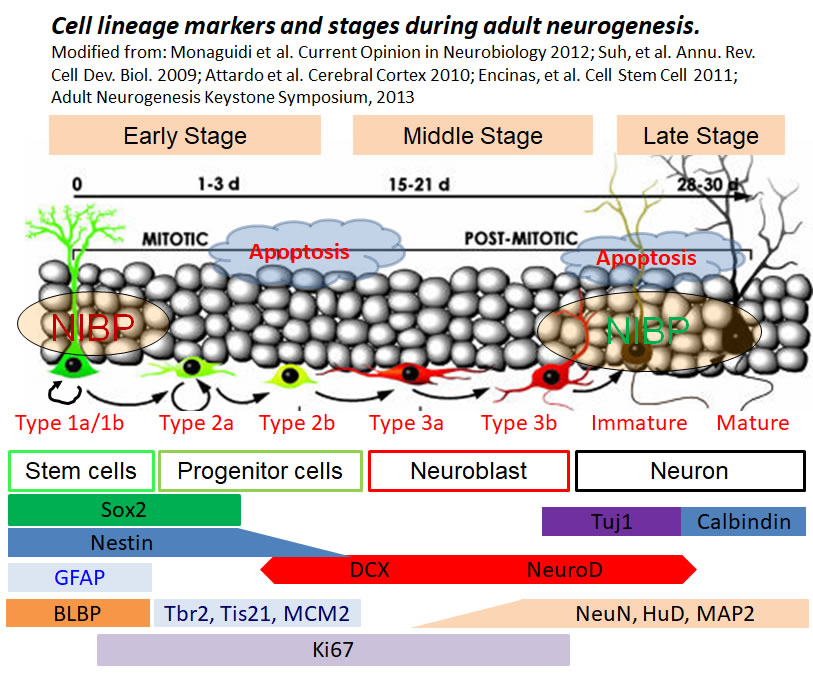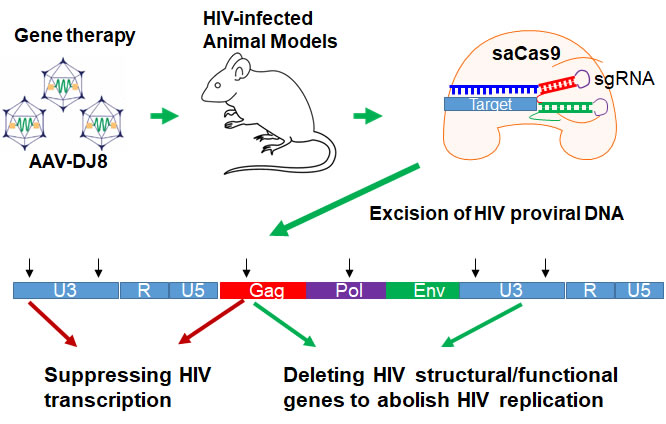The challenges of discovery and translation inspire my biomedical research. I am fascinated by the creative process of identifying novel molecules that regulate signal transduction and gene expression. My creativity and productivity are reflected by achievements during the past years. The overarching goal of my lab research is to understand the novel mechanisms underlying neural development, adult neurogenesis, neuronal polarization, neuroregeneration, neuroinflammation, metabolic syndrome and tumorigenesis.
NFkB signaling is a central and often pathogenic mediator of inflammation, immunity and neural plasticity, that contributes to developmental  defects and chronic diseases including neurodegenerative diseases, chronic inflammatory diseases, autoimmunity, and cancer. We discovered a novel protein NIBP[NIK- and IKK2- binding protein, which enhances cytokine-induced NFkB activation by increasing kinase activities of IKK2 and NIK. Due to the presence of a conserved domain of Trs120, a key member of yeast trafficking protein particle complex (TRAPPC) II, NIBP is renamed as TRAPPC9. NIBP/TRAPPC9 interacts with the other members of TRAPPCII. It relays the vesicle-dynactin interaction at the target membrane, allowing nascent endoplasmic reticulum-Golgi intermediate compartment to move along the microtubules. In humans, NIBP function appears critical to neurogenesis, mental development and neural functional integrity, because homozygous NIBP non-sense mutation is closely correlated with autosomal recessive mental retardation and neonatal microcephaly. In addition, homozygous deletion of the NIBP genome in humans leads to severe developmental delay, retinal dystrophy, hearing loss, obesity, and dysmorphic facial features. We envision that NIBP plays key roles via NFkB signaling and protein trafficking. Discovering its roles will advance current understanding of many basic cellular processes, and provide a novel biomarker and therapeutic target for neurodevelopmental defects, neurodegenerative diseases and cancer.
defects and chronic diseases including neurodegenerative diseases, chronic inflammatory diseases, autoimmunity, and cancer. We discovered a novel protein NIBP[NIK- and IKK2- binding protein, which enhances cytokine-induced NFkB activation by increasing kinase activities of IKK2 and NIK. Due to the presence of a conserved domain of Trs120, a key member of yeast trafficking protein particle complex (TRAPPC) II, NIBP is renamed as TRAPPC9. NIBP/TRAPPC9 interacts with the other members of TRAPPCII. It relays the vesicle-dynactin interaction at the target membrane, allowing nascent endoplasmic reticulum-Golgi intermediate compartment to move along the microtubules. In humans, NIBP function appears critical to neurogenesis, mental development and neural functional integrity, because homozygous NIBP non-sense mutation is closely correlated with autosomal recessive mental retardation and neonatal microcephaly. In addition, homozygous deletion of the NIBP genome in humans leads to severe developmental delay, retinal dystrophy, hearing loss, obesity, and dysmorphic facial features. We envision that NIBP plays key roles via NFkB signaling and protein trafficking. Discovering its roles will advance current understanding of many basic cellular processes, and provide a novel biomarker and therapeutic target for neurodevelopmental defects, neurodegenerative diseases and cancer.
Ongoing Projects:
I. Developing novel NIBP animal model and human induced pluripotent stem (iPS) cell model in order to identify
1) novel role of NIBP/NFkB signaling in cell-fate decisions driving brain and gut neurogenesis, 
2) novel function of NIBP/trans-Golgi network in neurite initiation and axonal outgrowth,
3) novel role of NIBP in hypothalamic neurogenesis and energy homeostasis, and
4) novel role of NIBP signaling in HIV latent infection and HIV-associated neurocognitive disorders (HAND);
II. Manipulating neuronal and glial NFkB signaling in animals to establish cell type-specific role of NFkB signaling that drive the development of novel therapeutic target for neuroinflammation and neurodegenerative diseases in both central nervous system and enteric nervous system;
III. Using CRISP/Cas9 genome editing to “knockout” the latent HIV provirus from host cells, using dCas9-mediated synergistic activator to “shock and kill” the HIV latent cells and using dCas9-mediated epigenome suppressoror silence permanently the latent reservoir;
IV. Exploring the role and mechanism of novel exin21 in boosting the production of antibodies, mRNA vaccine, virus and recombinant proteins.
Major Techniques:

-
Gene editing (CRISPR/Cas)
-
Neural stem cell and iPS cell culture
-
Microglia-containing cerebral organoids (MCO) and vascularized MCO
-
RNA interference
-
AAV-mediated gene therapy
-
Nanoparticles and virus-like particles
-
Conditional transgenic or knockout animal model
-
Stereotactic injection and retrovirus labeling of neural stem cells
-
RT-qPCR and ddPCR
-
Bulk and single cell RNA-seq and bioinformatics analysis
-
HCR-ISH and multilabeled immunohistochemistry

-
Confocal imaging
-
Functional assay
-
Neural behavior test



